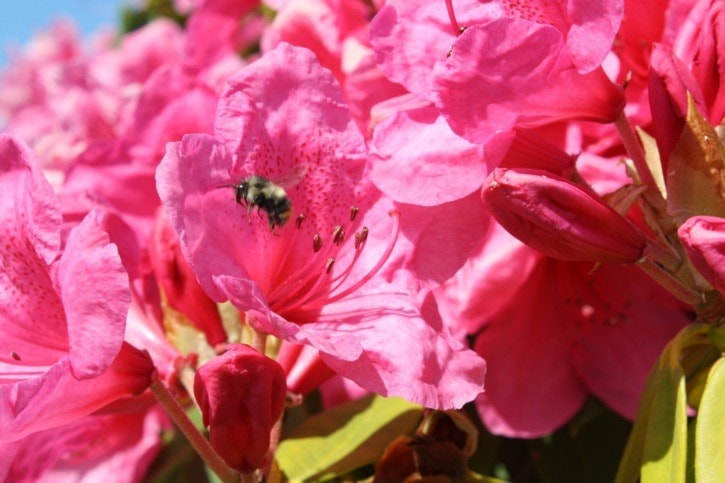It’s spring and bees are already buzzing around the early blossoms. We gardeners are always on the lookout for bees and welcome their presence wholeheartedly. But distinguishing one bee from another is generally something we don’t think much about.
Did you know that Canada has approximately 800 species of bees and that roughly 70 per cent of these are solitary ground-nesters? Did you know, as well, that the primary purpose of bees is not to make honey, but to pollinate flowers? With nearly 80 per cent of all flowers relying on pollinators to transfer their pollen, it’s easy to understand why agriculture is so dependent on bees — the most important of these pollinators.
Most of us are familiar with the native bumblebee, which is in the same family as the non-native honeybee, but not with the myriad other species constantly at work all around us. We don’t know what they look like, where they live, or how they behave.
Victoria-based bee expert Gord Hutchings refers to native bees ‘flying flowers.’ It’s his way of describing their evolution. He notes that each species has characteristics that make it especially suited to pollinating particular flowers. Variations in tongue length, hairiness, jaw type and size, for example, allow different species to extract nectar and pollen from flowers of different shapes and designs. All native bees, however, excel at remembering patterns. They fixate on colours and on ultraviolet patterns on petals, which only they can see, and they internally map their nests and collection sites with great accuracy.
Because native flowers and native bees have evolved together over millions of years, they are perfectly in tune not only with each other, but with their climatic conditions as well. What affects one affects the other. Loss of habitat and use of pesticides are the main threats to their survival.
Hutchings is the guest speaker for this month’s meeting of the Sooke Garden Club. An entomologist who has been studying insects for several decades, Hutchings is a recognized expert on native pollinating bees. His presentation – Prime Pollinators: Flower designs and how bees work with them – will focus on our native pollinating bees, their basic life cycles, habitats and nesting requirements. He will also talk about the plants that attract these bees and steps that can be taken to make private and public spaces bee-friendly.
Please join us on Wednesday, April 25, 7:30 p.m., in the Sooke Legion Hall.
A parlour show will be held, and contest potatoes will be available. New members are always welcome. Membership is $15 for the calendar year and can be purchased at the door. For more information, e-mail: sookegardenclub@yahoo.ca or phone Jane at 250-646-2573.
From Hutchings Bee Service webpage:
“I predict that this coming year will be excellent for bumble bees. Around Victoria, our first bumble bees were seen the first week of February after a short stretch of sunny weather. With our mild winter, there most likely was a high survival rate of the various Bombus species of hibernating queens in the ground.
“Bumble bee boxes should be put out now as they will start looking for suitable nesting areas. Go to “Mason Bee Condos and Bumble Bee Boxes For Sale” https://sites.google.com/site/hutchingsbeeservice/mason-bee-condos-for-salepage for ideas to consider or look on the internet for further designs. Remember, bumble bees just need a one-compartment box, not a fancy apartment as some designs have. I’ve seen bumble bee nests on flat surfaces even!”
